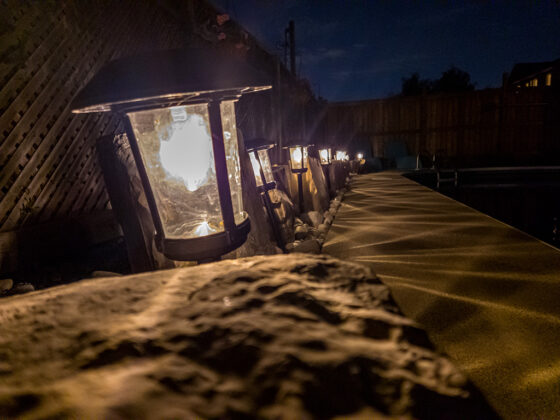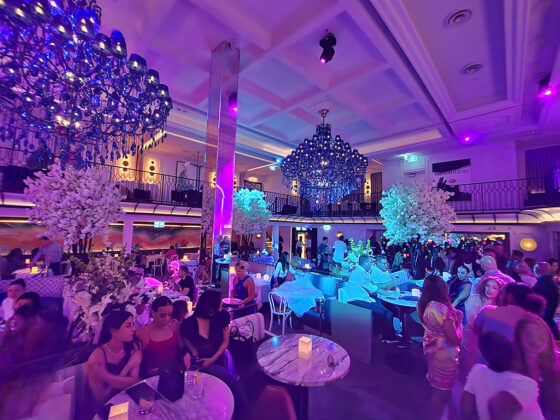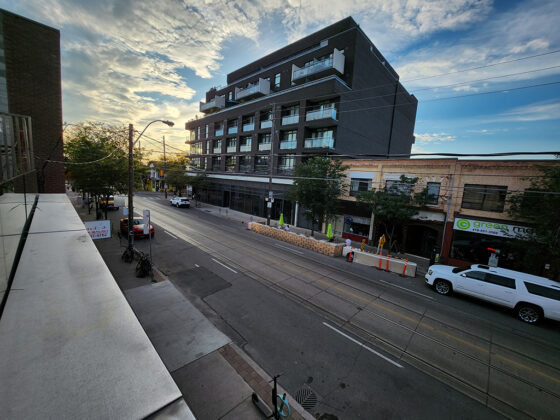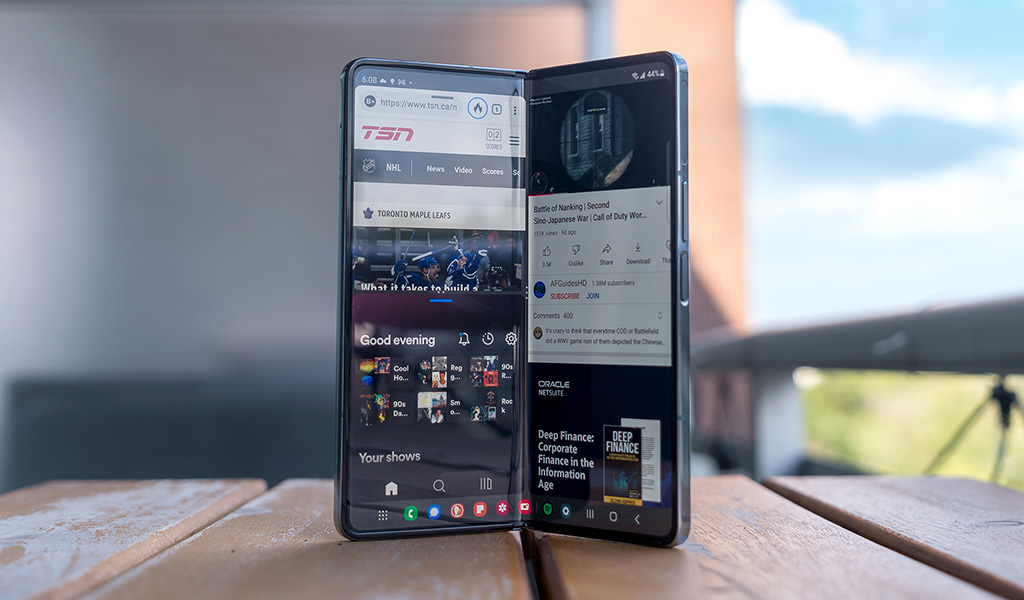
Foldable phones are still a novelty to most people, and the Samsung Galaxy Z Fold4 is the most prominent should you want to change things up. Despite being the fourth iteration of the phone, it is very much a work in progress to achieve a vision that feels complete. That’s not to say the phone isn’t viable, just that you need to get used to it.
As it stands, there hasn’t been a foldable “revolution” of any kind yet. You’re not seeing folding devices all over the place, though it’s conceivable that could happen in the years to come. For now, the Galaxy Z Fold4 is the flag-bearer for phones that fold, though it’s fair to say it’s also not the most practical. Not cheap, either, and the differences are largely iterative compared to last year’s Galaxy Z Fold3, which I also reviewed. Your decision to go with this comes down to whether it suits what you have in mind.
Samsung Galaxy Z Fold4 specsDisplay: (Unfolded) 7.6-inch 2176 x 1812 Infinity Flex Dynamic AMOLED display with 373 pixels per inch |
The Galaxy Z Fold4 inside and out
The Galaxy Z Fold4 is a device that demands utility from its user, not just the other way around. What I mean by that is you should be looking at this device from a usability standpoint. Could you make use of all that screen real estate in ways that you never could with your current phone? The answer is yes, but it’s up to you to determine how best to do that.
The basics behind this device remain the same. Liek the Fold3 it’s still a 7.6-inch Dynamic AMOLED when you unfold it, albeit with slimmer bezels around it. The bigger difference is with the 6.2-inch Dynamic AMOLED Cover display, which has a wider aspect ratio now. Not only is it easier to handle because of it, it also makes it less likely you’ll fold the phone open as often. Whether it’s dealing with notifications or quickly doing something, it just feels more natural to do it on the Cover screen.
These design tweaks do make the phone a tad lighter and thinner. Another reason why is the hinge uses a slimmer mechanism that allowed Samsung to shave off a little space. It’s a minor thing, but if you’re coming from, say, the Fold2, you will notice it more.
Lighter is always good when talking about a phone that is considerably heavier than other phones. It does have IPX8 water resistance, and Samsung claims the glass is now 45% stronger to withstand daily wear and tear. Unfortunately, the glass doesn’t go completely flat—the crease still falls down the middle. I didn’t always find it distracting, but it’s also hard not to notice it.
As thick as it already is, I do feel like putting a case on it, or at least a folio case, is a good idea. The inner screen is generally protected by the fold, but the front and back aren’t. Given the weight and unusual thickness, plus how often you fold and unfold it, the chances of an accidental drop do go up.
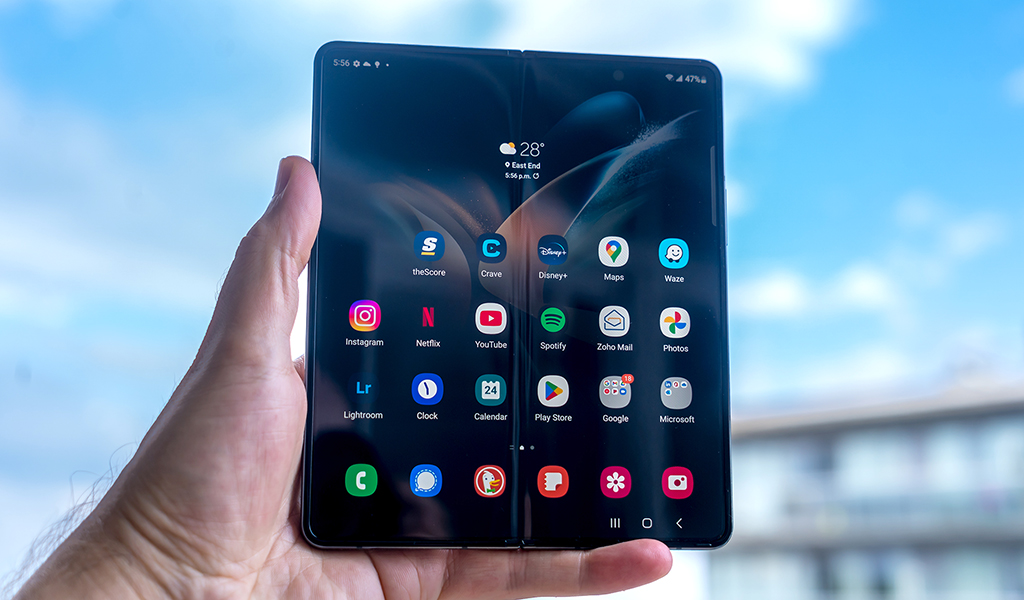
Galaxy Z Fold4 performance and software
It’s important to remember that only specific S Pens work with the Galaxy Z Fold4. That would either be the Fold Edition or S Pen Pro. Neither one comes with the device, but it does appear the ones released in 2021 will work on this Fold4. I didn’t get any to test out, so I can’t speak to any specific differences or changes to using the pen with this phone. I suspect, however, that it’s going to be an iterative improvement.
The phone’s internals are more than good enough to handle what you need to do. Multitasking is still sublime on this thing, and Samsung made a great move with the new taskbar at the bottom. It appears whether you have one or more apps open. It even includes app combos you’ve put together. For instance, say you have a web browser and YouTube open at one time—the taskbar will remember that pairing and let you get back to it.
This bar is different from the side menu you slide out for shortcuts to your favourite apps. That side menu simplifies just dragging and dropping an app into the open screen. You can have three apps open at once, but before you do that, you need to make one change. Not all apps are necessarily optimized for multiscreen setups, including the Fold4’s Flex mode. Go to Settings->Advanced features->Labs->Multi window for all apps to toggle that on. This forces all apps to adjust themselves to newer orientations. Another one worth toggling in there is swipe for split screen. Swipe up or from the side with two fingers and you can automatically enter split screen mode.
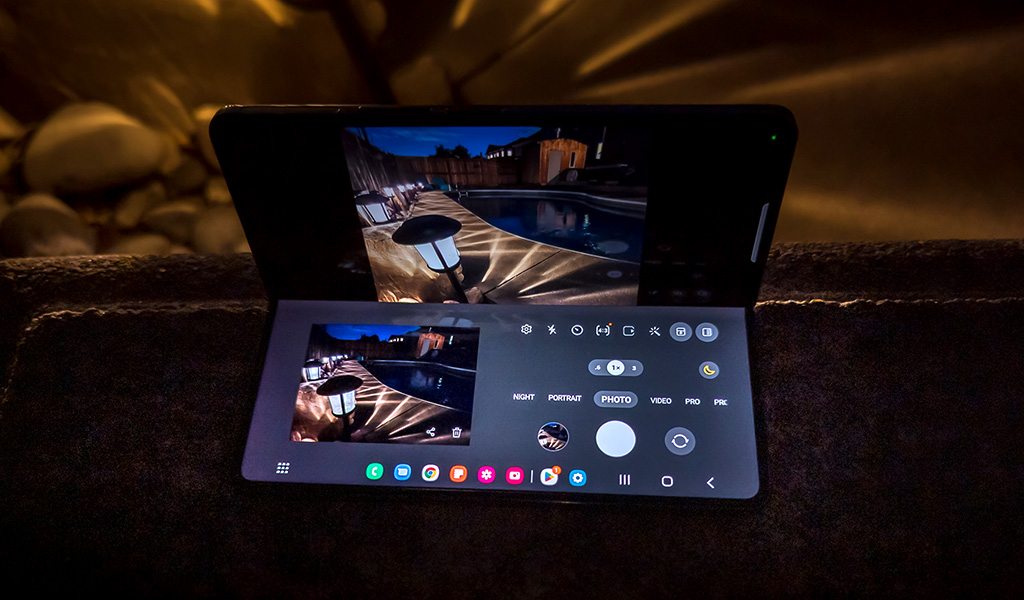
Flex mode on the Galaxy Z Fold4
Flex mode is one of the things I really like about the Galaxy Z Fold4, though more for photography or watching video. If you’ve never used one of Samsung’s Folds before, it’s not hard to learn. A lot of it is based on drag-and-drop, as well as sliding apps to cover more or less of the screen. Since most apps aren’t optimized for it, it may sometimes feel disjointed or clunky, but it’s getting there.
While this isn’t specific to Flex mode, the Fold4 delivers more of a drag-and-drop experience for files, too. If I have a photo in the Gallery app, and I’ve opened my Google Drive app next to it, I can just drag the image into Drive to save it there. Same with copying text and pasting it into another app.
It’s taking longer to get more third-party apps to fully support Flex mode, so it will feel like a work in progress on this phone throughout the time you have it.
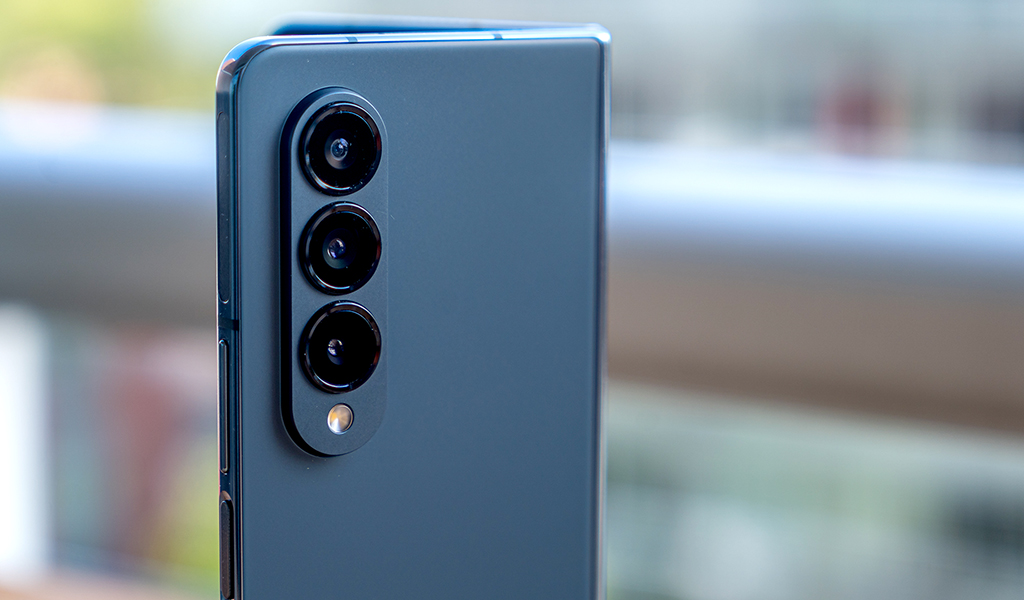
Galaxy Z Fold4 camera
After doing little to change the cameras inside the Fold, Samsung finally made a key change. However, the Fold4 is not the device that pushes the envelope on camera output, so it’s not a huge shift. Basically, Samsung put the same image sensor it used in the Galaxy S22+ and S22 into this phone. Little has changed with the other lenses, so there’s a lot of familiarity here.
The primary wide lens is a 50-megapixel shooter, though it defaults to 12.5-megapixels because of pixel binning. You can shoot at full resolution when you select that mode, though it works best when lighting conditions are optimal. For me, I saw no surprises here having already been familiar with how all these cameras previously captured images.
You can get good shots with this phone, though the cameras are not the reason to buy it. What makes the Fold4 different is how you use it to take photos. I like setting it down on a flat surface and shooting subjects from various angles. Long exposure shots in Pro mode are much easier to do this way, as are those in Night mode. Plus, when you shoot with the phone folded open, you can see the preview of what you just shot on the other screen.
Selfies are also very different because, folded open, you can capture yourself with the rear camera and see the preview on the Cover screen. Super useful and a much better alternative from the terrible front camera on the 7.6-inch display.
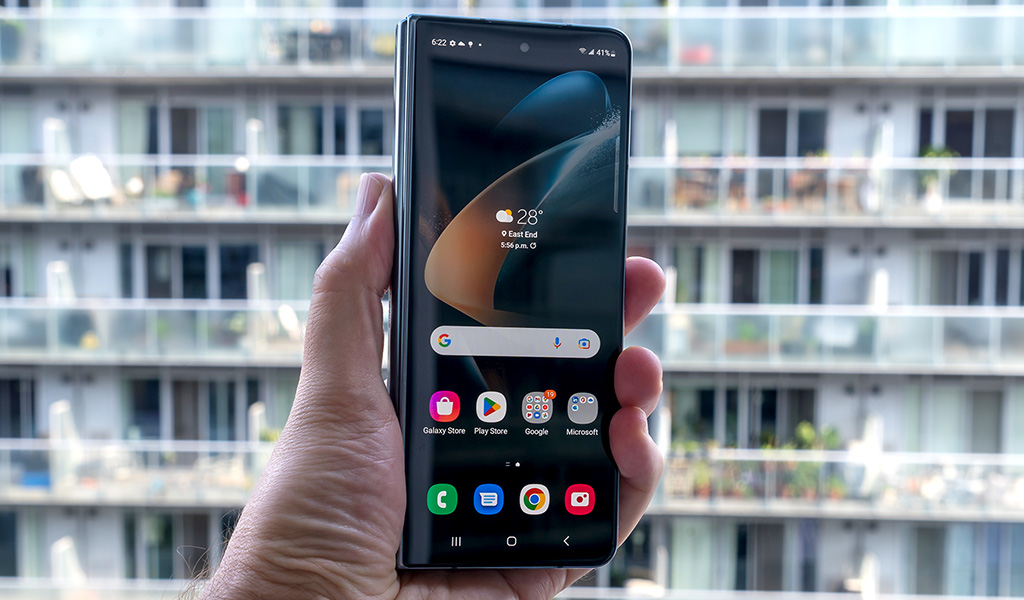
Galaxy Z Fold4 battery life
The battery is the same size as the previous Fold3, only it works a little more efficiently here. Realistically, it can be an all-day phone for you, but if you’re using it a lot, you may need to give it a charge along the way. As I expected, I was running low by bedtime, but if I wasn’t on it as much during the day, it would have plenty of juice left. That’s why it’s hard to quantify how long it will last, given all the variables.
It does support wireless charging, as well as fast charging. You don’t get a charging brick in the box, but if you have a good charger at home, you can get to 50% in as little as 30 minutes.
Final thoughts
With each foldable phone, Samsung is clarifying that such a device isn’t conceptual anymore. While you’re not likely to see them in the wild all the time, especially (I think) because of the cost, they prove to be handy in ways other phones aren’t. The trade-off is you have to deal with something that’s thicker, heavier, and expensive to repair. I noticed these points come up when showing the phone to others. They liked the potential and appreciated the productivity doors it could open, only to have to consider how easy it would be to wield.
It’s not enough to just want it because it folds. You need to be intrigued or taken with how it works. This is, after all, a lot like a tablet. Samsung has done a good job in making the software better integrate apps into this unusual form factor. Android also runs better now than it did when the Fold first launched a few years ago. The pieces are coming together with each iteration.
The Samsung Galaxy Z Fold4 is available now in phantom black, greygreen, beige, and burgundy.

